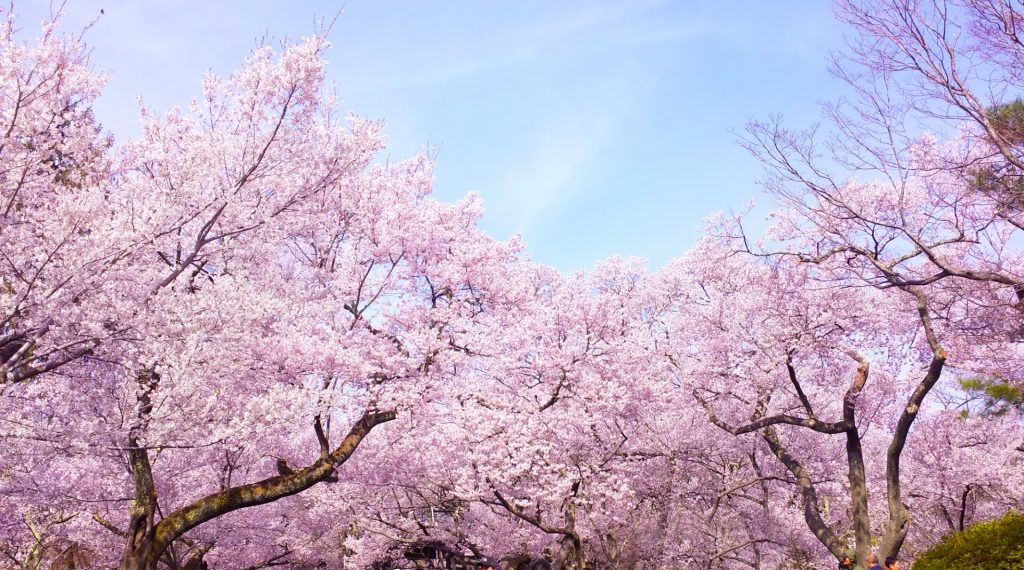Introduction of Japan
- Geography: Japan is an island country situated in the East of Asia and composed of four main archipelago.
- Climate: temperate climate with four distinct seasons. You can enjoy seasonal vacations, sports and food throughout the year.
- Section: Administrative divisions: organized in 1 metropolitan district (to-Tokyo), 1 district (dou-Hokkaido), 2 urban prefectures (fu-Kyoto and Osaka) and 43 rural prefectures (ken).
- Population: 127,560,000 people (statistics from October 2009)
- Economy: as an industrialized nation, it is considered the second economic power in the world regarding to its GDP.
- Regional distribution: the population of Japan, with a scale bigger than 100 million people, is distributed mainly in big cities at each region (excluding the regions of Shikoku and west Japan).
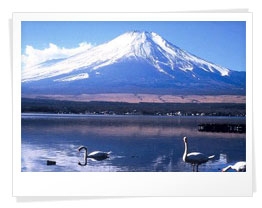
The majority of citizens live either in the big cities or in their outskirts.
The population density of the whole territory is one of the highest in the world. The population is mainly concentrated in the coast and 90% of the population lives in 10% of the territory.
The population is concentrated in the Pacific coast more than the Japan Sea coast. In particular, the population of Tokyo metropolitan area accounts for around 1/3 of the population of Japan making it the world’s largest urban area. For that reason, the price of the land in the centre of Tokyo has been rising considerably and problems such as the doughnut phenomenon (people tend to live in the outskirts) and the like occurred.
Each prefecture is introduced with the following contents.
[Prefecture name] (1) Prefectural seat (2) (3) Famous products (4)
Hokkaido
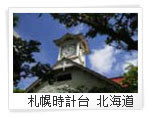 <Industry>
<Industry>
Contributes 12% of the agricultural products in Japan and is the top producer of sugarboot(tensai), potato and wheat. It occupies 40% of Japan’s fresh milk production and has 1/4 of sea catch of Japan’s fishing industry. There are foods, paper and pulp, steel, machinary and petrochemical industries.Tourism market is also active.
[Hokkaido] (1) Sapporo (2) 5,570 (3) .Mt.Daisetsuzan and Lake Mashuko, Seafood and potato, Sapporo Snow Festival (4) 28.8/-6.8
Tohoku
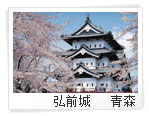 <Industry>
<Industry>
Occupies 1/4 of the national rice production. Cultivation of apples, cherries, peaches and pears are also active.Tohoku is privilleged to have many good fish habitat. Whilst industrialization is pushed forward, traditional industries remain strong.
[Aomori](1) Aomori (2) 1,407 (3) Lake Towada, Apple, Nebuta Festival (4) 29.1 / -4.5
[Iwate](1) Morioka (2) 1,364 (3) Kitakami River, Chusonji Temple, Chaguchagu Umakko(procession of decorated horses)(4)30.0/-3.3
[Akita](1) Akita (2) 1,121 (3) Hachirogata, Kiritanpo, Kanto Festival (4) 31.0/-3.3
[Yamagata](1) Yamagata (2) 1,198 (3) Mt.Zao, Cherries, Hanagasa Festival (4) 31.5/-5.0
[Miyagi](1) Sendai (2) 2,347 (3) Matsushima, Zunda mochi(rice cake), Tanabata Festival (4)28.5/-2.5
[Fukushima](1) Fukushima (2) 2,067 (3) Mt.Bandai, Peaches, Nomaoi(wild horse chase)(3) 31.5/-2.4
Kanto
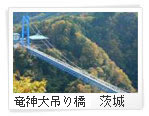 <Industry>
<Industry>
World-class technologies are concentrated here. Efforts are poured to fortify technological development and inter-industrial cooperation.Automotive, household electrical appliance, aeronautical industries and service industry are active. Suburban agriculture is active in the Kanto Plains. Steel, shipbuilding, machines, petrochemical industries are thriving.
[Ibaraki](1) Mito (2) 2,969 (3) Kasumigaura, Natto(Fermented beans), Kairakuen Park (4) 29.7/-3.2
[Tochigi](1) Utsunomiya (2) 2,014 (3) Nikko, Strawberry, Ashikaga School (4) 31.0/-3.2
[Gunma](1) Maebashi (2) 2,016 (3) Ozegahara, Spring onions, Daruma Market (4) 32.2/-1.3
[Saitama](1) Saitama (2) 7,090 (3) Chichibu, Sweet potato, Chichibu Night (4)32.6/-0.6
[Chiba](1) Chiba (2) 6,098 (3) Kujukuri-hama beach, Peanuts, Shellfish gathering (4) 30.8/1.6
[Tokyo](1) Tokyo (2) 12,758 (3) Asakusa, Monja-yaki, Sanja Festival (4) 31.1/2.0
[Kanagawa] (1) Yokohama (2) 8,880 (3) Hakone, Miura radish, Kamakura (4) 30.8/1.9
Chubu
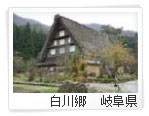 <Industrial>
<Industrial>
Famous for its rice, mandarin orange, tea, apples, grapesand peaches. The second largest industrial zone is centerned in Nagoya
where industries such as machinery and aeronautical, automotive, pertochemical and wool factories are active. Ceramic and new
ceramic products are also produced. Famous for pulp and paper, musical instrument and motrocycles. Precision machinery industryis also active.
[Niigata](1) Niigata (2) 2,405 (3) Sadogashima, Koshihikari rice, Hakusan Shrine(4) 31.9/-0.7
[Toyama](1) Toyama (2) 1,106 (3) Tateyama mountain range,Hotaru squid, Kaze no Bon
(4)32.7/-1.2
[Ishikawa](1) Kanazawa (2) 1,106 (3) Kenrokuen Park, Zuwai gani crabs,Kaga-yuzen (4) 32.4/-0.2
[Fukui] (1) Fukui (2) 816 (3) Tojinbo, Echizen gani, Eiheiji Temple(4) 33.1/-1.1
[Yamanashi](1) Kofu (2) 877(3) Mt. Fuji, Grapes, Shingenko Festival(4)33.1/-2.5
[Nagano](1) 2,196 (2) Kamikochi, Shinashu noodle, Zenkoji Temple (4) 32.7/-5.6
[Gifu] (1) Gifu (2)2,104(3) Shirakawa-go, Ayu fish,Ukai (4) 34.4/0.2
[Shizuoka](1) Shizuoka (2) 3,801 (3) Mt. Fuji, Tea, Izu Peninsular (4)
30.6/1.9
[Aichi](1) Nagoya (2) 7,360 (3) Nagoya Castle, Miso Katsu, Atsuta Shrine (4) 33.6/0.4
Kinki
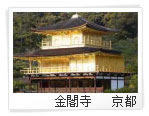
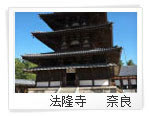 <Industry>
<Industry>
Suburban agriculture, forestry, mandarin orange cultivation, pearl farming.In Japan’s third industrial zone, heavy chemistry, textiles, electrical equipment, food, and other industries developed.
[Mie] (1) Tsu (2) 1,876 (3) Pearl, Ise shrimp, Ise Grand Shrine (4) 31.6/2.2
[Shiga] (1) Otsu (2) 1,396 (3) Lake Biwa, Funazushi, Hikone Castle (4) 31.3 7/0.8
[Kyoto](1) Kyoto (2) 2,635 (3) Amanohashidate, Tofu, Gion Matsuri (4) 33.4/0.6
[Osaka] (1) Osaka (2) 8,812 (3) Osaka Castle, Okonomiyaki Tenjin Matsuri (4)33.2/2.8
[Hyogo] (1) Kobe (2) 5,589 (3) Mt. Rokko, Kobe Beef, Himeji Castle (4) 31.5/2.6
[Nara] (1) Nara (2) 1,4 10(3) Yoshino, persimmon leaf sushi, water removal (4) 32.6/-0.1
[Wakayama](1) Wakayama (2) 1,019 (3) Kumano Kodo, Umeboshi, Nachi no Hi Matsuri (4) 31.8/2.9
Shikoku
<Industry>
Shipbuilding, metal, paper and pulp, towels and chemical fiber factories are concentrated at industrial zones in Setouchi.
[Tokushima](1) Tokushima (2) 800 (3) Whirlpools, Sudachi citrus, Awa Odori Dance (4)33.2/2.8
[Kagawa](1) Takamatsu (2) 1,006 (3) Kankakei ravine, Udon, Kotohiragu Shrine (4) 34.0/1.9
[Ehime] (1) Matsuyama (2) 1,452 (3) Dogo hot springs, Iyokan citrus, Matsuyama Castle (4)33.3/2.1
[Kochi] (1) Kochi (2) 782 (3) Shimanto River, Katsuo(Bonito), Yosakoi Festival (4) 32.8/2.9
Chugoku
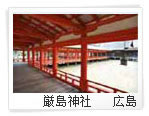 <Industrial>
<Industrial>
Pear, muscats and peach cultivation and oyster farming are active. Chemical fiber, steel, shipbuilding, automotive,Chemical fiber, steel, shipbuilding, automotive,petrochemical complex and cement factories are set up and industrial zones are developed.
[Tottori](1) Tottori (2) 600 (3) Sand dunes, Pear, Nagashiina Festival(flouting dolls) (4) 34.3/0.2
[Shimane](1) Matsue (2) 731 (3) Lake Anago, Shijimi, Izumo Taisha (4)31.8/1.1
[Okayama](1) Okayama (2) 1,953 (3) Korakuen Park, Muscat, Sto Ohashi Bridge (4)34.5/1.2
[Hiroshima] (1) Hiroshima (2) 2,873 (3) Akinomiyajima, Oysters, Genbaku Dome(The Atomic Bomb Dome) (4)33.6/1.9
[Yamaguchi] (1) Yamaguchi (2) 1,474 (3) Hagi, Globefish, Kintaikyo Bridge (4)33.6/0.8
Kyushu,Okinawa
<Industry>
Rice, double crops and mandarin orange cultivation in the northern region, potato and tabacco leaves cultivation and
livestock farming at southern Kyushu. Continental shelf – a good fish habitat is found here. Steel and machinaery industry,
chemical, shipbuilding and petrochemical industries are developed
[Fukuoka] (1) Fukuoka (2) 5,056 (3) Dazaifu, Mentaiko, Hakata Dontaku (4) 32.3/2.8
[Saga](1) Saga (2) 859 (3) Yoshinogari Ruins, Nori, Arita Ware (4) 32.8/0.3
[Nagasaki](1) Nagasaki (2) 1,453 (3) Fugendake, Takuku cuisine, Nagasaki Kunchi (4) 31.6/2.8 [Kumamoto] (1) Kumamoto (2) 1,828 (3) Asoyama, Masashi, Kumamoto Castle (4) 33.4/0.4
[Oita](1) Oita (2) 1,203 (3) Beppu Onsen, Kabosu, Ma cliff Buddha (4) 32.4/1.7
[Miyazaki] (1) Miyazaki (2) 1,143 (3) Takachihokyo, pumpkin, Nishitohara Kofun (4) 31.8/2.1
[Kagoshima](1) Kagoshima (2) 1,730 (3) Sakurajima, Satsumaage, Satsuma Cutko (4) 32.8/3.9 [Okinawa](1) Naha (2) 1,373 (3) Iriomote Island, Champloo, Shuri Castle (4) 32.1/14.2

